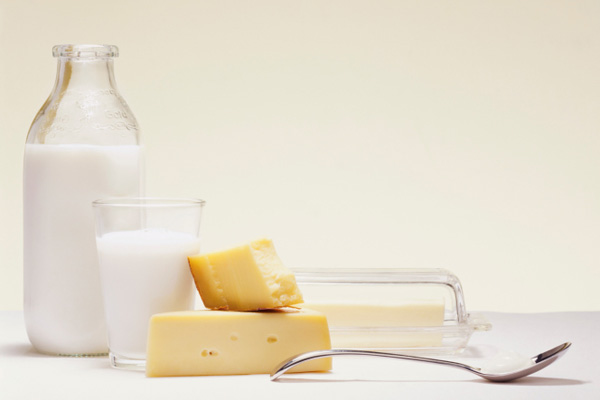Do You Have Lactose Intolerance?

Have you ever had a glass of milk and then felt bloated or gassy? Does eating a slice of pizza upset your stomach? If so, you might have a lactose intolerance, a condition that commonly affects a significant percentage of certain ethnic groups.
What is lactose?
Lactose is another name for milk sugar. Lactose is found in milk and milk products, including yogurt, ice cream and cheese. An enzyme called lactase breaks down lactose into two simple sugars, glucose and galactose, which are then absorbed into the bloodstream.
What is lactose intolerance?
If your body doesn’t make enough or any lactase enzyme, lactose can’t be digested. Undigested lactose moves from the small intestine to the large intestine where millions of bacteria ferment it, giving off hydrogen and methane gasses. This inability to produce enough lactase enzyme to digest lactose is called lactose intolerance.
What are the symptoms of lactose intolerance?
The most common symptoms of lactose intolerance are:
- Abdominal bloating or swelling
- Stomach pain
- Gas
- Cramps
- Diarrhea
These symptoms can occur as a result of other conditions, but if you experience any of these 30 minutes to 2 hours after consuming milk products, you might have lactose intolerance.
What causes lactose intolerance?
Lactose intolerance can be hereditary; it’s also common in certain populations, including African Americans, Asian Americans, Latinos and American Indians. Americans of European descent are the least likely to have lactose intolerance.
Infections, such as gastroenteritis, or diseases like celiac disease or Crohn’s disease can also lead to lactose intolerance. Intestinal surgery, injury, chemotherapy and abdominal radiation may also result in this condition. In rare cases, some babies are born without any lactase enzyme.
How is lactose intolerance diagnosed?
While it is possible to diagnose lactose intolerance based on symptoms and eliminating dairy foods, the most accurate and reliable way to diagnose the condition is with a hydrogen breath test. Done at the doctor’s office, you drink a beverage that contains 50 grams of lactose and then breathe into a container that measures the amount of hydrogen in your breath. A high amount of hydrogen indicates a likely lactose intolerance.
Does having lactose intolerance mean avoiding all dairy foods?
If you’re diagnosed with lactose intolerance, you might think you need to say goodbye to dairy foods. However, this is generally not necessary or even desirable. Dairy foods provide important nutrients, such as calcium, vitamin D and protein, all necessary for bone health. The good news is that most people with lactose intolerance can tolerate a certain amount of lactose. The amount varies from person to person, but studies show that ingesting 12 grams of lactose per day (the amount found in 8 ounces of milk) does not lead to any symptoms for many people. The key is finding out what you can tolerate.
It’s important to note that lactose intolerance is not the same as a milk allergy. Lactose intolerance occurs due to a lactase enzyme deficiency; a milk allergy is an immune reaction to milk proteins. In the case of a milk allergy, all foods and beverages that contain milk must be completely avoided.
Tips for managing lactose intolerance
- Experiment with dairy foods to figure out how much lactose you can tolerate. For example, try drinking small amounts of milk over the course of a day and keep track of your symptoms.
- Try lactose-free milk, such as Lactaid, Dairy Ease or Horizon Organic milk. You can also try milk alternatives, such as almond, soy, rice or coconut milks. But be aware that with the exception of soy milk, most milk alternatives are not good sources of protein.
- When you eat cheese, choose hard cheeses; they contain very little lactose.
- Try yogurt or soy yogurt (also called cultured soy). The bacteria in yogurt often digest the lactase for you.
- Take lactase enzyme tablets to help you better digest dairy foods after you’ve eaten them.
- Read ingredient lists for milk and milk products. Milk is found in many non-dairy foods, such as bread, processed meats and granola bars. Avoid milk, whey, curds, milk solids or non-fat dry milk powder.
- If you can’t tolerate any dairy products, talk with your doctor or dietitian about ways to include calcium and vitamin D in your diet. You may need to take supplements.

